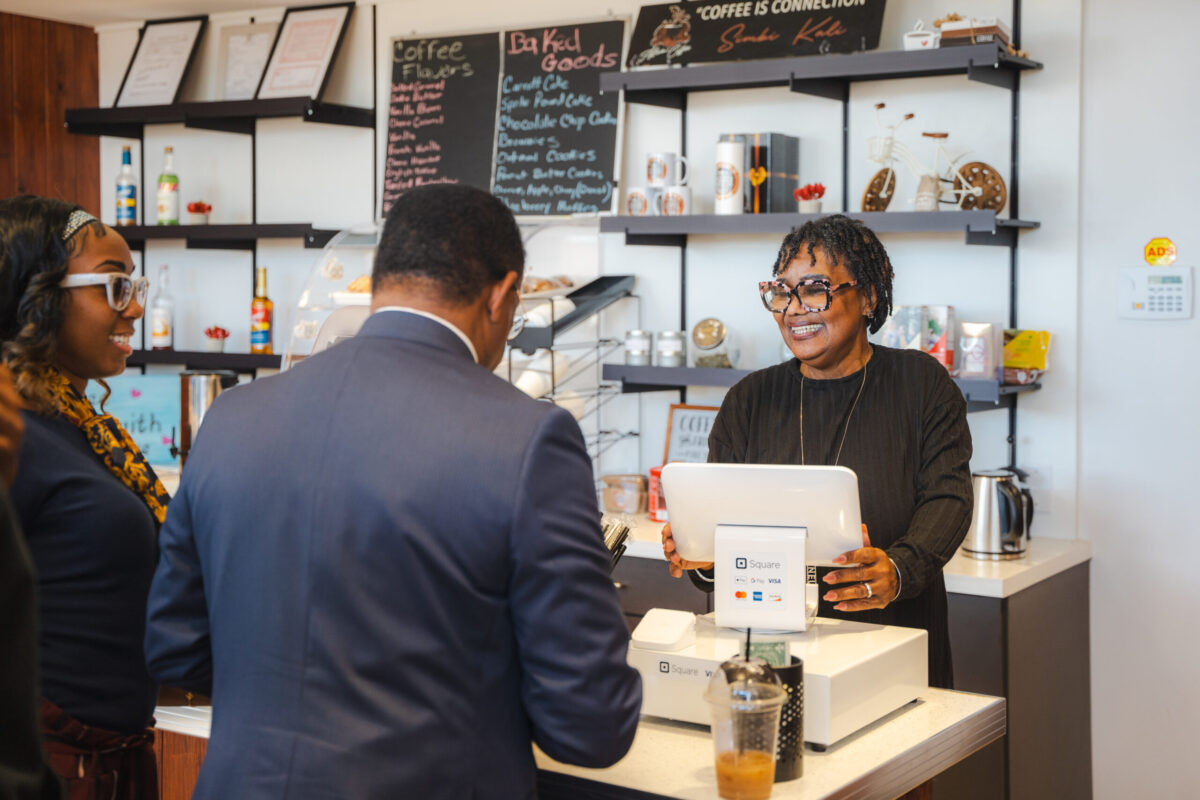Reviewed by: Sharron Swain
“Going Solar” Toolkit: Want to power your home, business or school with the sun? Here’s how.
Reading time: 7 minutes
Sponsored

Alabama and South Carolina are much alike.
We both have large auto plants, airplane manufacturers and grow a lot of cotton and peaches. Our populations are almost the same size, with a little over 5 million people. But there is one big difference between the states: solar power.
According to the annual Solar Energy Industries Association (SEIA) Solar State by State Report, Alabama has 235 solar installations across the state, employing 716 people.
South Carolina? A whopping 33,104 solar installations and 3,393 solar related jobs.
Alabama is way behind our neighboring states in the South when it comes to solar power.
We can change that.
In our first two installments, we examined why Alabama-based Milo’s Tea Company has gone solar at their factory in Bessemer and how a Presbyterian Church (U.S.A) camp on the Cahaba River is using the sun to power its facilities.
In this third and final story on solar power in Alabama, we provide a “toolkit” on how to install a solar energy system at your home, business, church, school or community.
Why solar?

National Renewable Energy Laboratory says — “More energy from the sun falls on the earth in one hour than is used by everyone in the world in one year.”
Solar power is expected to grow from 3% of the U.S. electricity supply to 45% by 2050,
according to the Solar Futures Study produced by the U.S. Department of Energy.
Even though the industry is in its infancy, big changes are coming here and across the U.S. Want to join the movement?
We’ve created a step-by-step guide to installing solar, including input from many folks in Alabama’s solar industry.
Step 1: Find your electric provider

The first step to installing solar—whether at your home, business, church, school or within the community—is to know who provides your electricity.
In Alabama, we have several energy providers and local utilities:
- Alabama Municipal Electric Authority (and its local utilities)
- Alabama Power Company
- Power South (and its cooperatives)
- Tennessee Valley Authority (and its local utilities)
Visit the provider’s website and learn how to connect to their grid. Also, ask about programs they might offer to assist people seeking to install a solar power system.
Step 2: Find out if solar will work in your location
(Caption) Slappy Communications in Cahaba Heights (Eagle Solar & Light)
If you want to install a solar power system at your home or church, first consider whether it will be a good fit.
Here are some basic questions to ask:
- What is the condition of your roof?
- If it needs a replacement, are you planning to do it soon?
- Does your roof face south?
While a south-facing roof is best for solar, east-facing and west-facing roofs also work, with east getting peak morning sunshine and west getting more light in the afternoon.
If you are replacing your roof relatively soon but still want to go solar, a ground mounted system is a great option!
Step 3: Know the rules
If you live in a historic district, you may have to go through a design review committee or a local historic district review board. You will likely need to secure building permits, too. Make sure to cross your t’s and dot your i’s when it comes to local ordinances and regulations.
Step 4: Research your installer

Use certified solar contractors. You can find a directory provided by North American Board of Certified Energy Professionals.
Important: Make sure the company proposing to work on your project has a certified staff.
Step 5: Secure tax benefits to install solar for homeowners

Every homeowner in the U.S. qualifies for the federal investment tax credit—worth 30% of the cost of adding a solar array.
This benefit rose to 30% in 2022 and will be in place until 2032. For example, if you spend $10,000 on a solar installation at your home, then you qualify for a $3,000 credit toward the amount of federal income tax you owe.
We have found some handy fact sheets from the Department of Energy to assist homeowners:
- Homeowner’s Guide to the Federal Tax Credit for Solar Photovoltaics | Department of Energy
- Homeowner’s Guide to Going Solar | Department of Energy


Dr. Jim McClintock, a prominent UAB scientist and renowned Antarctic explorer, recently installed a system for his home. Here is how he got started with the process.
“Because of my desire to lower my family’s carbon footprint with energy cost savings, installing home solar has long been on my wish list.
Alabama Power accommodated the hookup to their power lines in a timely manner and I received a whopping 30% recovery of the cost of installation and parts from the federal government. The panels look great, and checking my solar rooftop energy production with my new solar app in real time makes me one happy guy.“
~ Dr. Jim McClintock
Step 6: Seek grants for nonprofits, churches and schools


As we reported in the second story in our series about solar power in Alabama, the recently passed Inflation Reduction Act of 2022 made nonprofits and government agencies eligible for direct payments of up to 30% for solar equipment through a program called Direct Pay.
This opportunity became operational in 2023 and will be in place for the next 10 years for nonprofits throughout Alabama and the U.S.
Rev. Michael Malcolm, who is the Executive Director of Alabama Interfaith Power & Light, has seen the financial impact solar power has on nonprofits and communities.
“Having solar means having economic upward mobility. For a nonprofit, it means that it can expand its impact on the community it serves.”
~ Rev. Michael Malcolm, Alabama Interfaith Power & Light
Step 7: Apply for a REAP grant – Rural Energy for America Program (businesses and agricultural producers only)

Over 38,000 farms and several hundred thousand rural small businesses in Alabama are eligible for REAP—the Rural Energy for America Program. Thanks to new laws passed in 2022, the program provides grants and loans to help pay for the installation of solar power systems in rural Alabama.
To learn more about the program, visit the following resources to see if you are eligible:
- USDA REAP Program
- Energy Alabama—a group dedicated to implementing the REAP program and walking farmers and small businesses through the process
- Contact Tiffany Bradford, Rural Business-Cooperative Service State Energy Coordinator for Alabama:
- USDA Rural Development, 4121 Carmichael Road, Suite 601 Montgomery, AL 36106,
- Telephone: (334) 279-3462
- Email: tiffany.bradford@usda.gov
Do solar power systems work for farms here in Alabama? According to Scott Ireland, using solar is a no-brainer.
“We installed our unit in the fall of 2019 when we realized we had the makings of an economically viable business. Knowing we were in it for the long haul, it made the most sense from a financial standpoint. Pair that with our passion for sustainability and a desire for some energy independence, using solar was a no-brainer. There is something beautiful about harnessing the sun to irrigate crops being invigorated by that same sun.”
~Scott Ireland, Ireland Farms
Bottomline: Solar power in Alabama is happening

Even though solar power adoption is still small in Alabama, compared to neighboring states, successful examples such as Milo’s Tea, Presbyterian U.S.A.’s Living River campus, Ireland Farms and homeowners like Dr. Jim McClintock show that it can be done.
Now, more than ever, because of a multitude of incentives—especially on the federal level—solar power is ready to take off.
Sponsored by:

![Inside look at the new The Toasted Yolk in downtown Birmingham [PHOTOS + VIDEO] Inside look at the new The Toasted Yolk in downtown Birmingham [PHOTOS + VIDEO]](https://i0.wp.com/bhamnow.com/wp-content/uploads/2025/07/IMG_3003-scaled-e1752264981924.jpeg?fit=768%2C402&quality=89&ssl=1)

